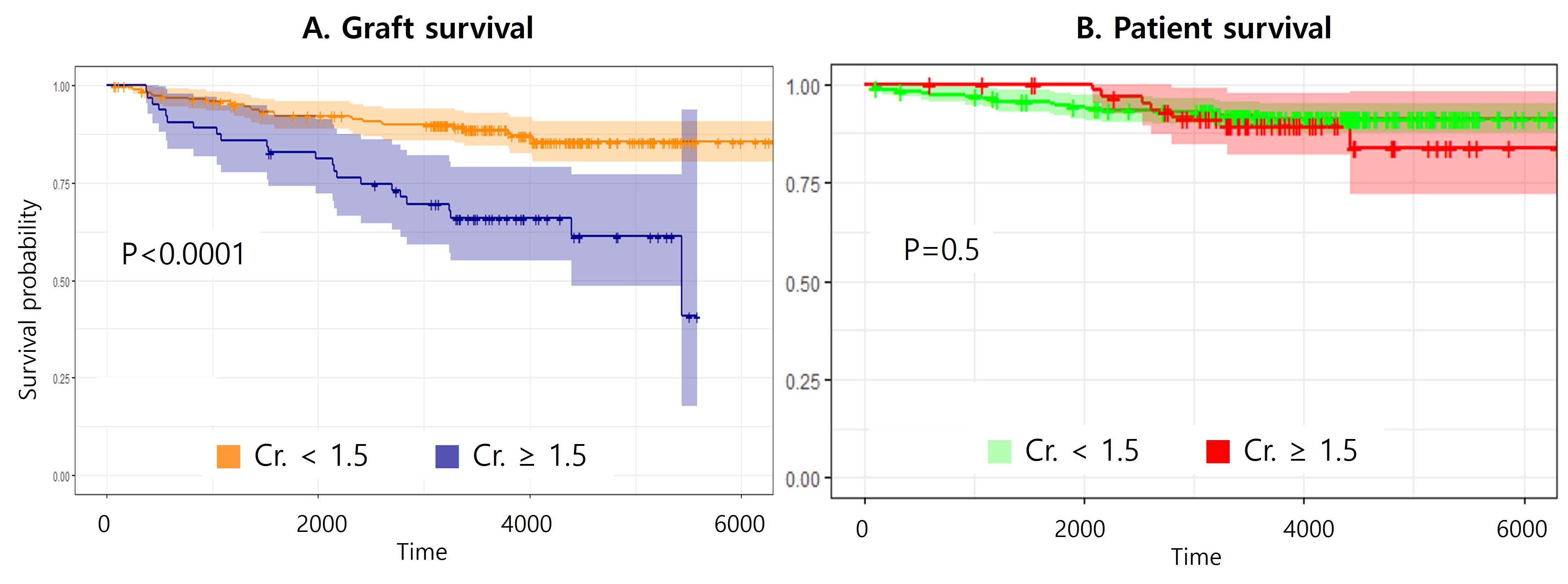Long-term outcome of recipients with suboptimal graft function at 1 month after deceased-donor kidney transplantation
Mihyeong Kim1, Hyungjin Cho1, Eunju Jang1, Kangwoong Jun1, Jeongkye Hwang1, Suncheol Park1, Jiil Kim2, Sangseop Yoon1.
1Surgery, Catholic University of Korea, Seoul, Korea; 2Surgery, Eulji hospital, Uijeongbu, Korea
Introduction After kidney transplant, it is often experienced that creatinine does not fall to normal levels even though the graft is functioning. We want to figure out how this would affect in the long-term outcome.
Methods We analyzed the medical records of patient who received deceased-donor kidney transplantation (DDKT) between January 2006 and February 2014 in single institute. We excluded the patient with primary non-function, still undergoing dialysis after 1 month or received multiple organ transplantation. We divided patients into two groups according the lowest creatinine level within 1 month after DDKT; creatinine less than 1.5 was defined as ‘standard group’ and 1.5 or more was defined as ‘suboptimal group’.
Results Total 294 patients was analyzed and mean period of follow-up was 10.5 years. Sixty-four patients (21.7%) showed suboptimal graft function.(Table 1) In suboptimal group, there were more male recipients and the donor were older. Delayed graft function was more common in suboptimal group. Graft survival was significantly lower in the suboptimal group but in patient survival, there was no significance.(Figure 1)
Conclusion Suboptimal graft function in the early stages of DDKT also shows poor long-term prognosis. In particular, if the graft function does not fall sufficiently after expanded criteria donor KT, this may be the basis for estimating long-term outcome.
|
Standard outcome (n=294) |
Suboptimal outcome (n=64) |
p-value | |
| Age | 47.9 ± 9.7 | 47.7 ± 8.6 | 0.88 |
| Male | 105 (45.7%) | 53 (82.8%) | <0.001 |
| Donor age | 42.7 ± 14.7 | 51.1 ± 12.2 | <0.001 |
| Donor sex | 140 (60.9%) | 47 (73.4%) | 0.089 |
|
Biopsy-proven acute rejection |
|||
| < 1month | 11 (4.8%) | 6 (9.4%) | 0.276 |
| Anytime | 59 (25.7%) | 22 (34.4%) | 0.221 |
| Delayed graft function | 15(6.5%) | 20 (31.2%) | <0.001 |

[1] Kidney transplantation
[2] graft survival
[3] donor selection
[4] delayed graft function
